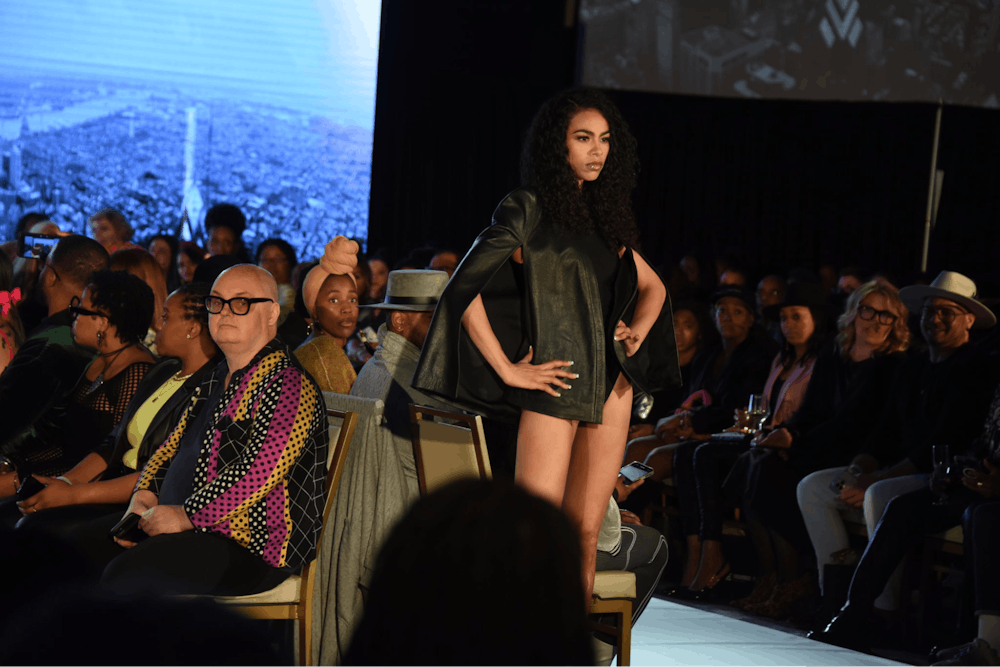From September 20th-24th the Philadelphia Fashion Week took the world by storm. A whole city was swept up in catwalks, models, and designer gowns–but it's not just the city, the world is watching its happenings.
As one watches the models strutting the runway, one might not realize that modeling today looks very different from 2010, or even 5 years ago. What is on the runway is constantly changing, but so is who is on the runway. In recent years, the fashion shows relationship between the models and their clothes has significantly changed.

Consider the supermodels of the 80s–icons like Cindy Crawford, Linda Evangelista, and Naomi Campbell, who were celebrated for their expressive faces and passionate walks. They were popularly known as “Trinity.”
As the 90s were ushered, this “Trinity” became the “Big Six” to include icons like Kate Moss and Christy Turlington. The 90s, more than any other time, brought about the idea of the capital S Supermodel, meaning supermodel not just as an occupation but as a lifestyle to admire from afar.
Cults of personality started to form as these girls were adored by the general public. A result of this supermodel-loving culture was when these larger-than-life figures walked the runway; the focus was taken away from the clothes they walked in.
This caused a problem for designers; the bleeding heart of the fashion industry is their designs, but the media’s attention had strayed away from it. Miuccia Prada in particular took note of this trend and whether intentionally or not a new trend started to appear in her shows. A direction in which all of the models looked barefaced, fair, and most distinctly identical.
Why were the identical models white? Well, there's a multitude of reasons for this.
The prevailing trend in modeling was Heroine Chic, a look that was a rebellion against “perfection.” So, instead of the clean and proper look, one would opt for looking for a form marked by deep eye bags, stringy hair, and pale skin.
Aligning the identical look with whiteness was more consistent with the prevailing trend. Additionally, the sourcing of models played a role. The surge of pale models coincided with Eastern European countries opening up to the Western world after the fall of the Soviet Union.
Talent agencies and scouts were sent to these countries and the models recruited were often very young disenfranchised women. Although the picking of these models was a result of a white supremacist beauty standard, they were also victims. The Soviet Union collapse also made the affected countries very impoverished. Scouts flocked to these countries, where they sometimes signed sketchy deals with girls to whom they sold dreams of success.
Enjoy what you're reading?
Signup for our newsletter
But was the outcome worth the problematic price to pay? Did these slue of Eastern European models result in viewers paying full attention to the clothes?
Well, no. Instead of curbing idol worship, it led to the idolization of a uniform look. The original intent was to diminish the model's prominence and emphasize the clothing, but the opposite effect can be seen.
Creating an industry where skinny, white, blank-faced models are fetishized and put on a pedestal. From the 90s to the 2010s, there was a significant setback in diversity, and models of color were worse off than they were in the past.
The relationship between the model and the fashion is often a strained one, and remedies to fix this strained relationship have often backfired. Movements like Heroine Chic and the influx of Eastern European models shared a similar goal: to break the standards of the fashion industry. But in attempting to break these standards, they built up harsher, more damaging ones in its place.
Diversity-wise, things are changing for the better. This year's Philadelphia Fashion Week features both designers and models who come from a variety of backgrounds. This is certainly a step in the right direction. However, the peculiar relationship between clothes and the stars who wear them still lingers, especially in the age of social media, where it's super easy to build a cult of personality around the star of one's choosing. What remains clear through it all is what the relationship should be: Hard-working designers making the clothes and hard-working models aiding the creatives to help show them off. When this core partnership is prioritized, the surrounding spectacle seems so minuscule




